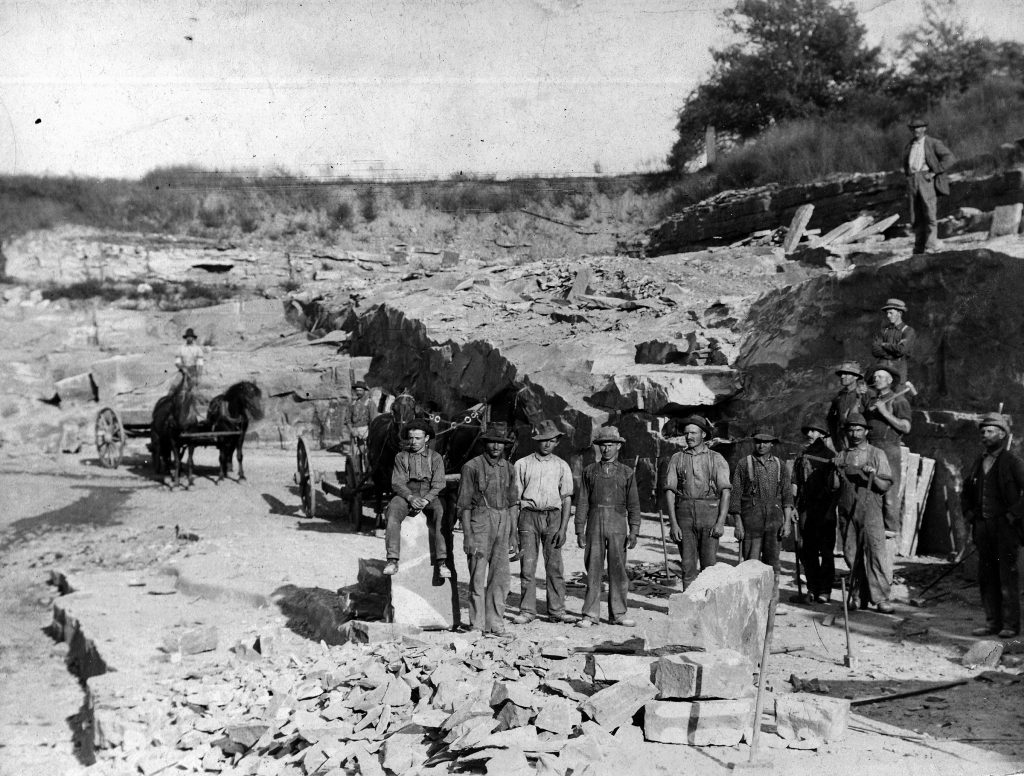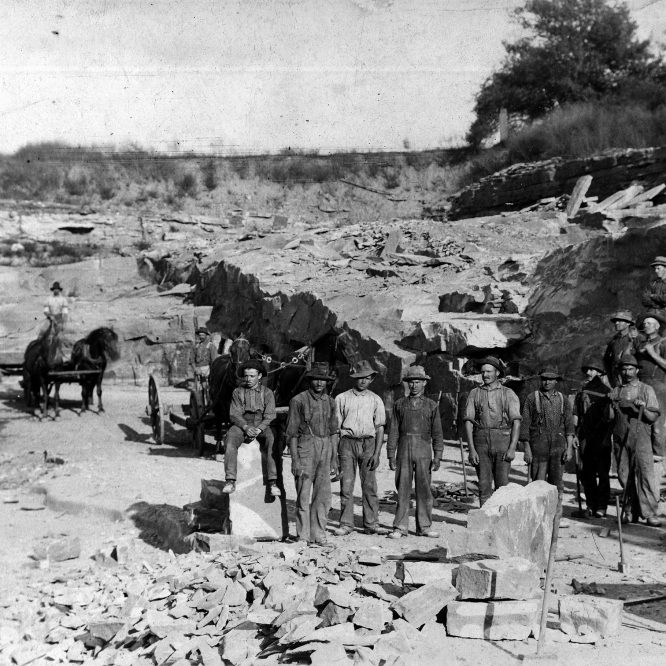Volume 4, Issue 38
The impact of Medina Sandstone extends beyond the beautiful structures that built from the durable material. Since the initial discovery of the resource during the construction of the Erie Canal and the subsequent opening of the first quarry by John Ryan in 1837, the sandstone industry was a driving force behind a diverse population in Orleans County. English, Irish, German, French, Polish, and Italian quarrymen traveled to this region in search of employment in the quarries, which provided the necessary funds to bring family and friends to the United States.
This image shows men in a local quarry who have paused to stand for a photographer. Scattered around the job site are a number of hammers and bars used for breaking and moving stone. The tools suggest that these men were responsible for dressing stone after it was extracted from the quarry. Standing at the front of the picture is a face hammer, which was used to roughly dress stones in preparation for detail work; several of these are positioned throughout the photograph. Another man holds a large square, which would have assisted in the rough dressing of stones. Teams of horses were used to haul the stone out of the quarries for shipment by way of the Erie Canal or N.Y.C. Railroad.
On February 20, 1902 a new quarry syndicate was established in the area, uniting nearly 50 quarries sprawled throughout Orleans County. The Orleans County Quarry Company was incorporated with $2,000,000 in capital and employed over 1,200 men. Initial startup funds were directed towards operating the quarries, paying salaries, and most importantly, developing the infrastructure to support the refinement of stone, sale, and transportation across both railroad and the Erie Canal.
The newly established business situated its headquarters at Albion and immediately began the search for a general manager; meanwhile, Edward Fancher was sent to New York City to begin peddling the products of the burgeoning company. Within months of incorporation, the ‘syndicate’ signed on to several major six-figure contracts for paving stones in New York City, which would aid in securing a promotion for Fancher to a position of superintendent of the company. Unfortunately, the start of World War One halted production and interest in the building material waned.
At the conclusion of the war, quarries were offered to individuals on a royalty basis with John Lubomski of Albion serving as the executive secretary. Once employees for the business, groups of men bought into the new system and took over management of individual quarries in the Albion and Murray area. Those such as Pasquale DiLaura, James and Edward Ryan, the Monacelli brothers, Camille and Henry D’Orazio, and Mario and William D’Andrea all entered into agreements with the company to manage the very quarries they once toiled in. The advent of the Great Depression marked an end to the golden age of the sandstone business in Orleans County as most quarries sold the stock they had and ceased the removal and cutting of stone from the quarries. At the conclusion of World War Two, new industries created a void in skilled labor for quarry work and new construction materials replaced the once valuable stone.


